|
1939: Germany invades Poland * World War II begins * Germany attacked Poland in September of 1939, with the goal of expanding Germany's territory. It was a very rapid invasion on the ground and in the air. Poland fell quickly. In response, Great Britain, France, Canada, and several other countries declared war on Germany. For about six months, there was little action by either side. But in the spring (1940), Germany began attacking other countries around its borders. The list included Denmark, Norway, the Netherlands, and Belgium. The photo below shows a German bomber in the sky over Poland during the invasion. |
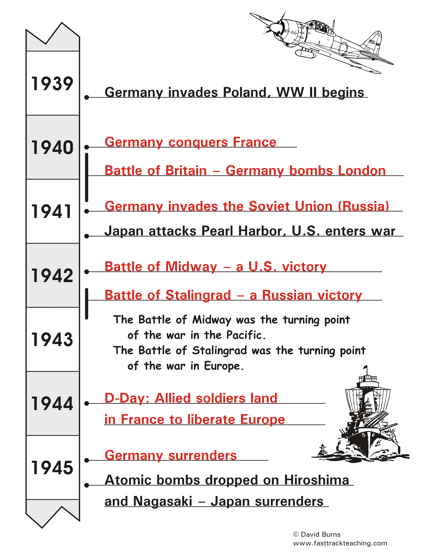 |
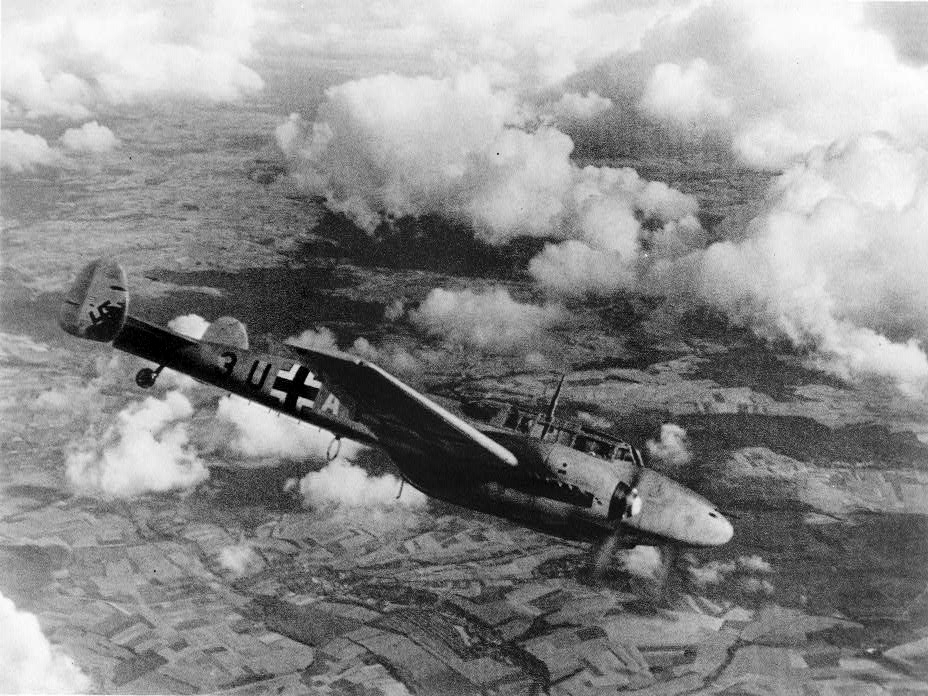
|
1940:
Germany invades and conquers France
After quickly conquering the smaller countries near its borders, Germany's army pushed into France. In spite of help from a large British army, France was defeated and forced to surrender in less than two months. It was a shocking defeat for the Allies. |
Axis Aggression in Europe 1937 - 1942 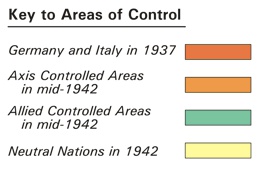 * E.P. = East Prussia, a province of Germany |
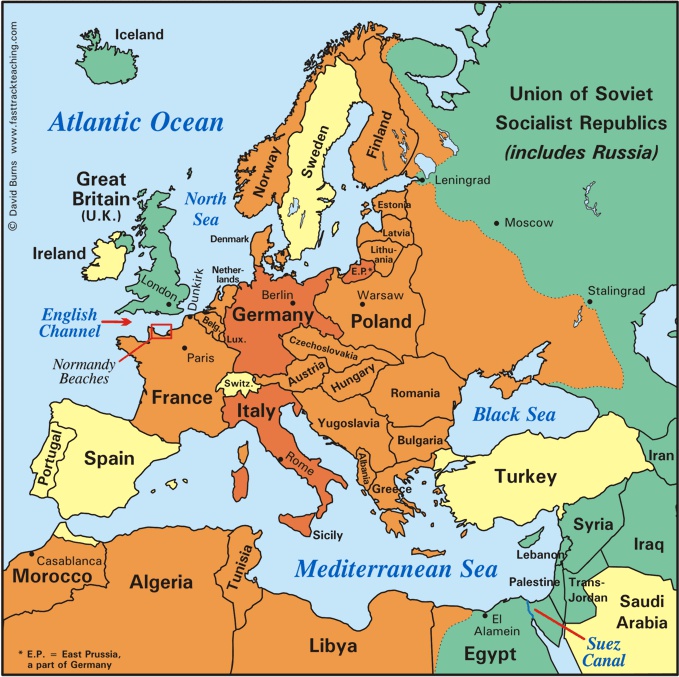 |
|
1940
- 1941: The Battle of Britain -
Germany bombs London by air After the defeat of France, Germany sent waves of bomber aircraft to attack England. It started in the summer of 1940 and lasted into 1941. Hitler hoped the British would panic and surrender. They did not. The photo below shows London at night during a bombing raid. |
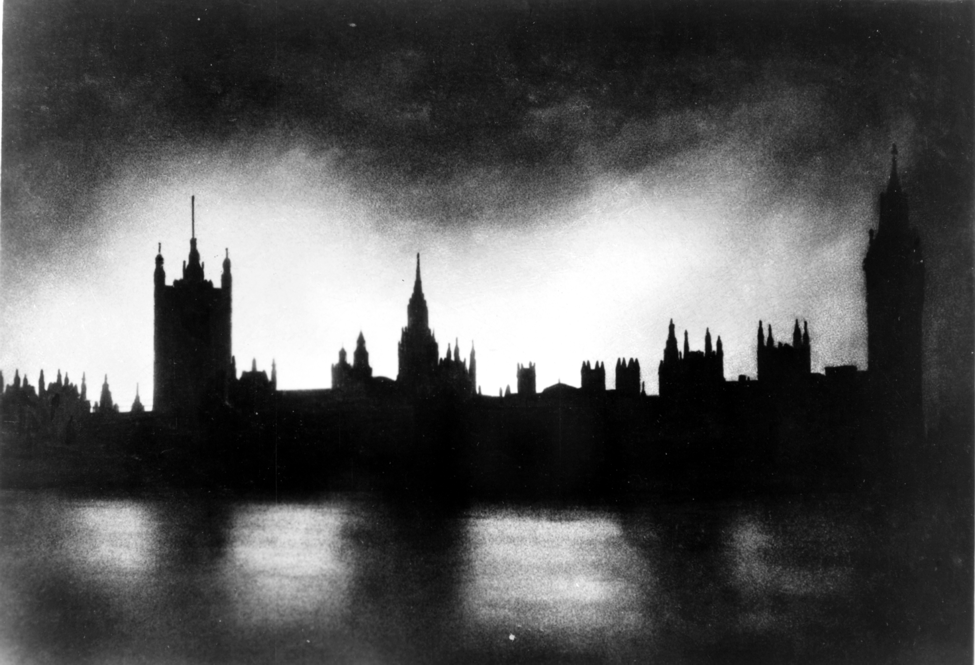
Below: The front page of the Daily Express, a British newspaper, on August 13, 1940.
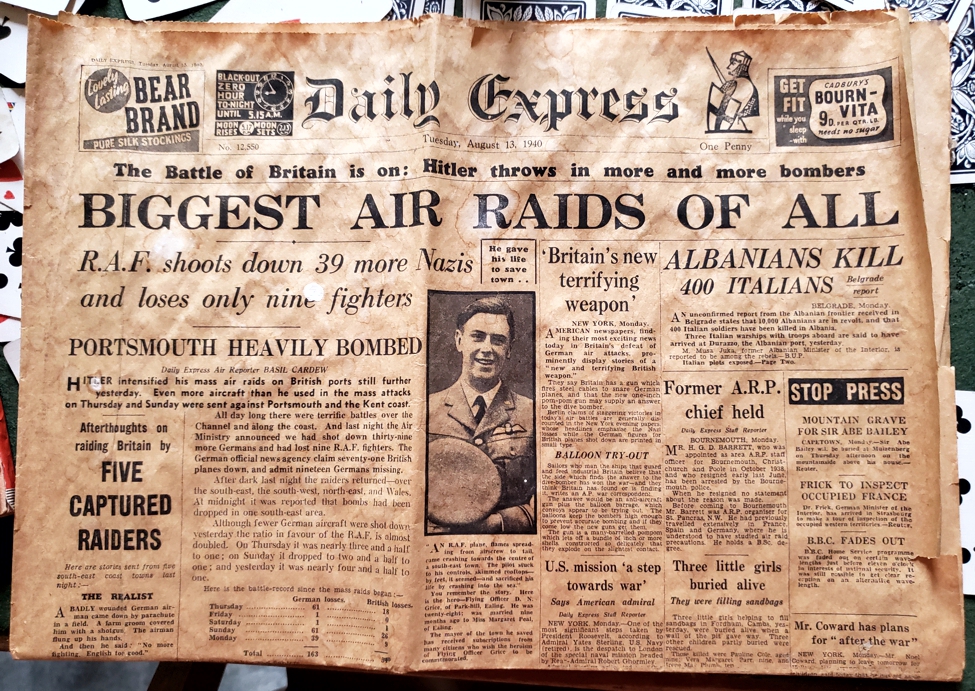
Click here to see this newspaper page in a larger size.
Below: A boy who survived a bombing raid holds a stuffed toy
amid the ruins of his home and neighborhood.
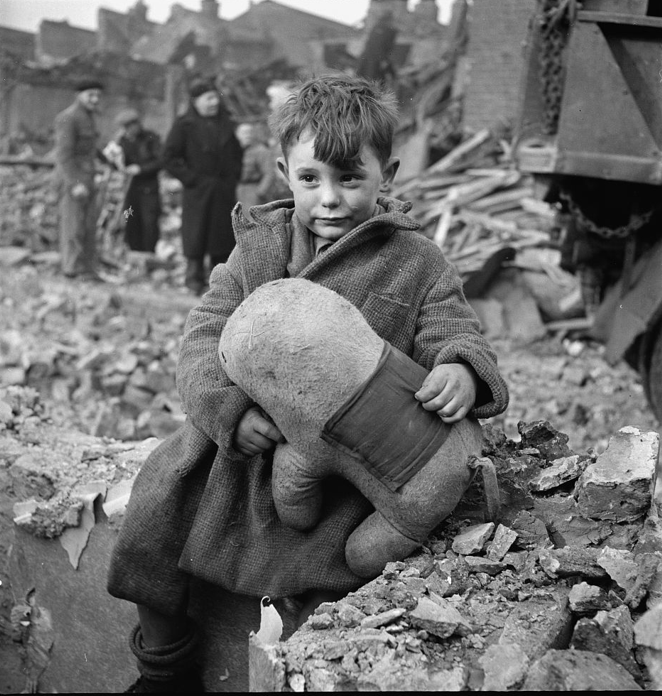
Below: Children huddled in a London subway tunnel around Christmas
time, 1940, during a German air raid attack. A man dressed as
St. Nicholas (Santa Claus) left small treats to cheer up the children.
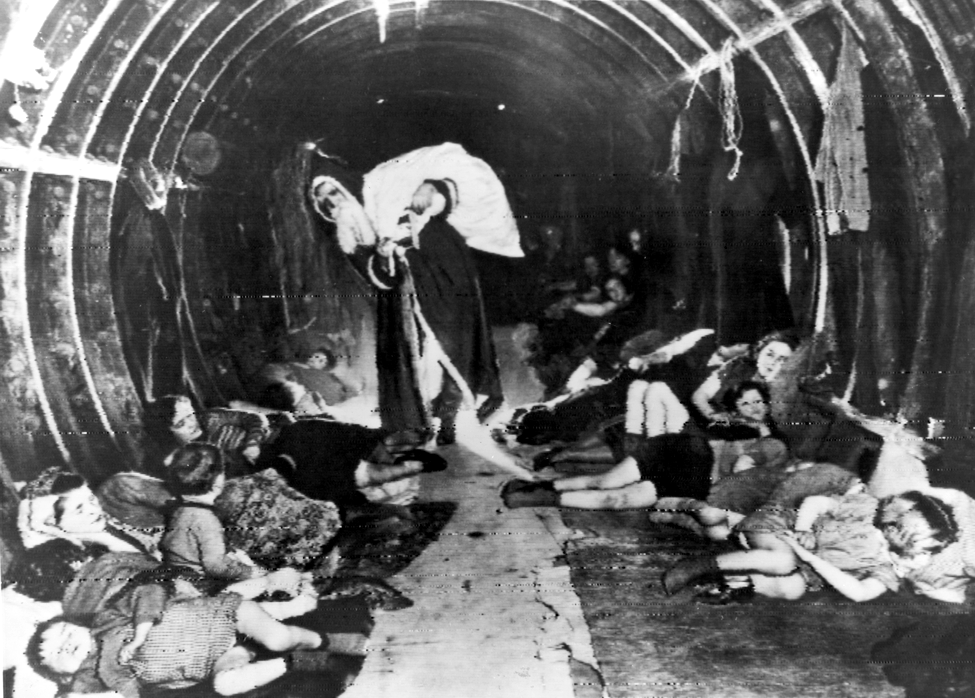
British leader Winston Churchill kept hope alive
Winston Churchill helped rally the spirit of the British people during
the darkest days of 1940 and 1941.
As the British Prime Minister, Churchill was the top elected leader. He became known for flashing the "V for Victory" sign, and for his inspiring speeches. In one of his most famous speeches he urged the British people: "Let us therefore brace ourselves to our duty, and so bear ourselves that, if the British Empire and its Commonwealth lasts for a thousand years, men will still say, 'This was their finest hour.'" |
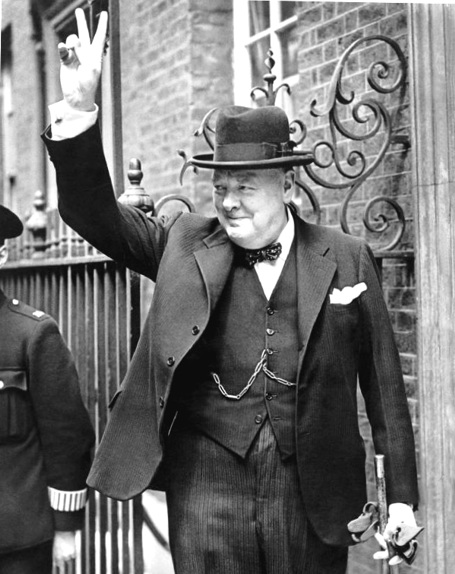 |
|
1941: The U.S. starts the Lend-Lease program to help the British The United States government began sending enormous quantities of food and war materials to Great Britain in a program that was called Lend-Lease. The list included tanks, guns, ships, radio equipment, and much more. Lend-Lease
marked the end of America's attempt to stay
neutral in the conflict.
America had declared itself neutral as the war began. With the start of the Lend-Lease program, however, the U.S. was directly helping the Allies. The photo below shows a tank being loaded onto a ship to deliver supplies and weapons to Great Britain. |
 |
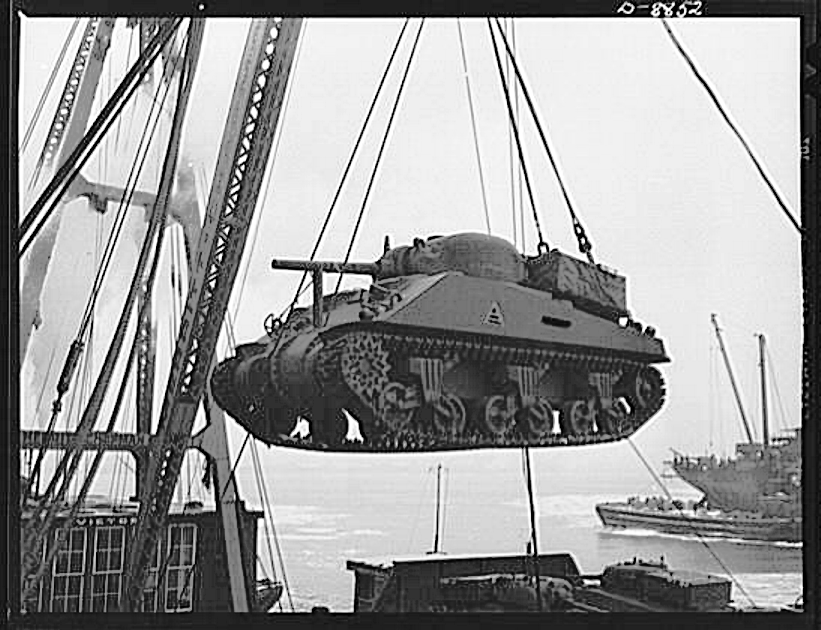
The photo below shows women at a factory in Ohio preparing canned
meat to be sent to to Great Britain under the Lend-Lease program.
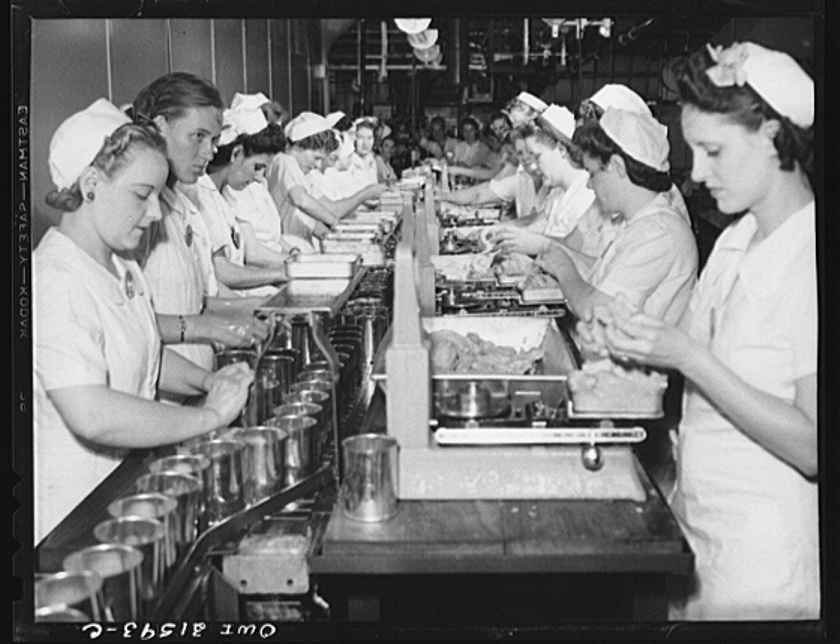
December 7, 1941: Japan bombs Pearl Harbor, Hawaii * America enters the war * Japan bombed the
U.S. Navy base at Pearl Harbor in 1941. Japanese leaders hoped
the surprise
attack would destroy enough ships to make America powerless in the
Pacific.
Instead of knocking the United States out of action, however, the attack brought America into the war:
|
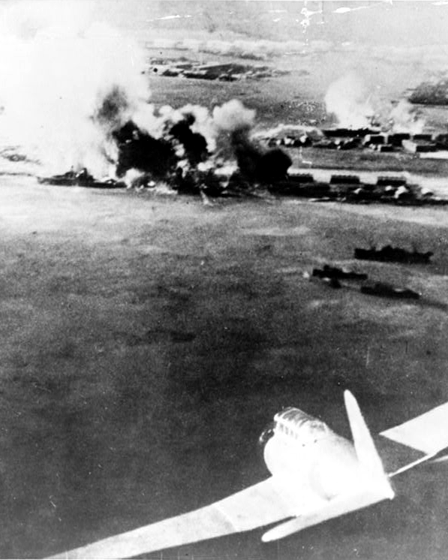 |
Below: The USS Arizona in flames at Pearl Harbor. Four battleships
were sunk, along with three destroyers and three cruisers. Over 2,300
people were killed, counting both military and civilian deaths.
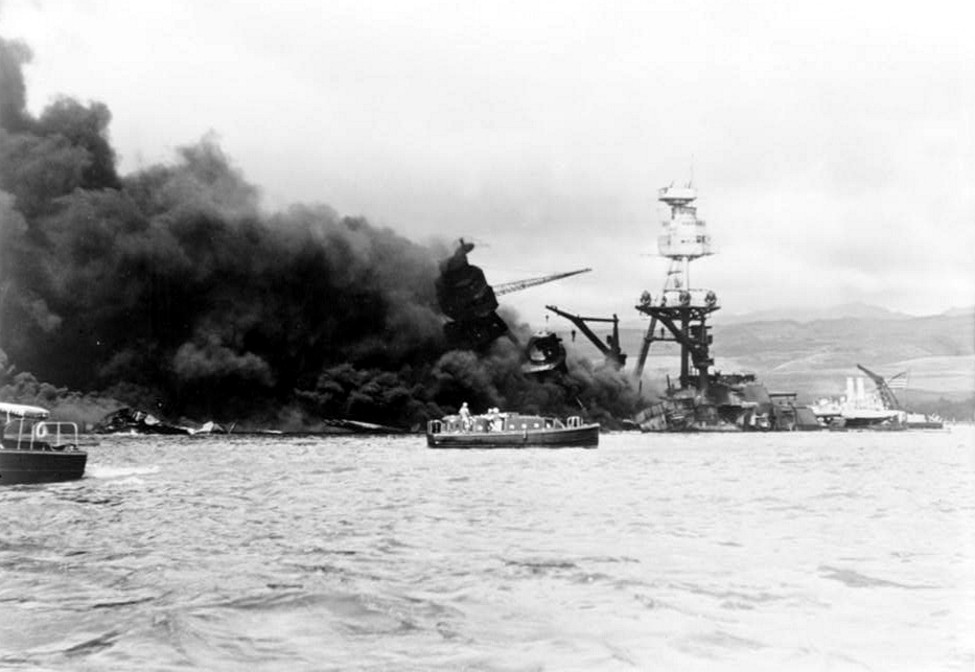
Notice on the map below the location of Pearl Harbor in the Hawaiian Islands.
Also, notice the location of Midway, another American island
where the Japanese attacked about six months later.

1942: The Battle of Midway The turning point of the war in the Pacific The Japanese
decided to hit the U.S. again by attacking an American base on the
island of Midway. This time, however, the
American Navy was ready and waiting.
The Japanese Navy lost so many ships and men in the battle that it never recovered full strength. It was a great American victory at sea. The puffs of black smoke around the aircraft carrier USS Yorktown (below) are from exploding anti-aircraft shells fired at the attacking Japanese planes. |
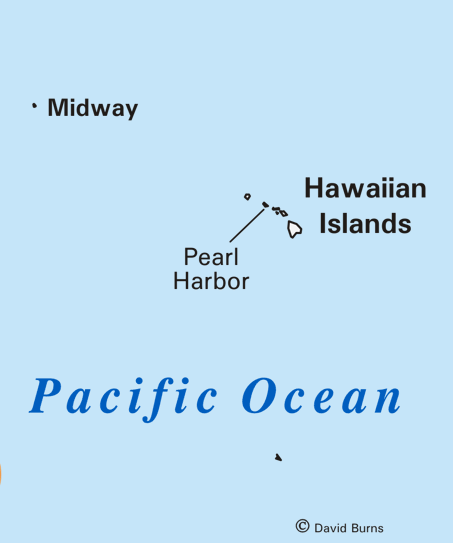 |
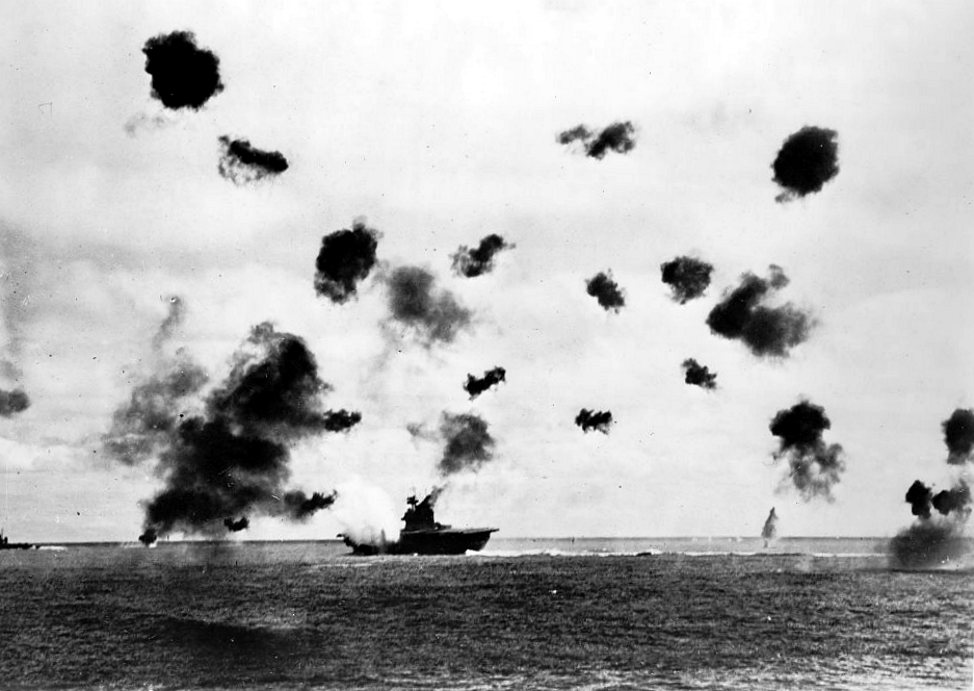
Below: A photo of a Japanese heavy cruiser knocked out of the fight
during the Battle of Midway by American airplanes. The Japanese Navy
lost four aircraft carriers and many other ships during the battle.
|
1943:
The German army is
stopped at
Stalingrad
The turning point of the war in Europe The Soviet Union (which includes Russia) and Germany made an agreement before the war that they would not attack each other. Germany attacked anyway in 1941. The Soviet Union then joined the Allies and began a desperate fight for its survival. The Soviet Union's army finally stopped the German attack at Stalingrad. That marked a turning point because the Soviet army began steadily pushing back the German army. |
Axis Aggression in Europe 1937 - 1942  * E.P. = East Prussia, a province of Germany |
 |
Below: German soldiers in an area of Stalingrad badly damaged
in the fighting. Over a million Russian soldiers were killed or
wounded during the fight to save the city.

|
1944 D-Day: Allied forces land in France to liberate Europe An enormous army of American and other Allied soldiers was built up in England in 1943 and 1944. They were trained and eager for D-Day. That was the code name for the day they would land on the beaches of Normandy, France. Once German troops guarding that area were defeated, the fight could begin to liberate (set free) France and the rest of Europe. The Allied army was carried by ships and planes across the English Channel on June 6, 1944. The photo below shows just one part of the landing area. The fighting was fierce on the Normandy beaches, but the Allied army took control. |
 |
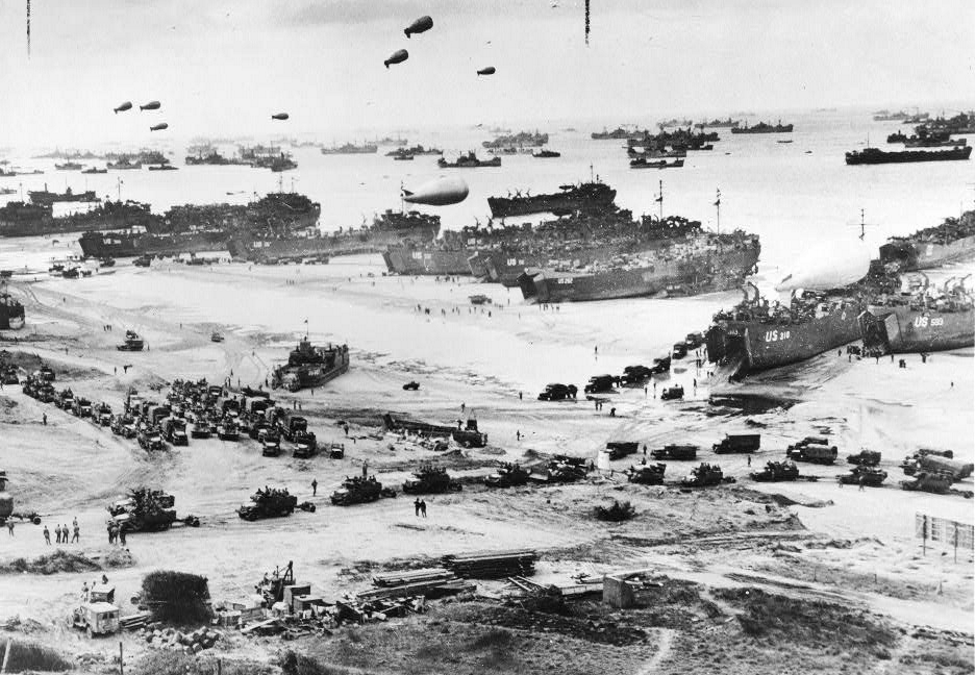
Below: A famous photo of an American soldier coming ashore
on D-Day to fight for the freedom of Europe.

Notice on the map below the location of the Normandy beaches on the French coast.
The Allied army pushed Hitler's army out of France and back into Germany.
Germany surrendered in May of 1945. Hitler killed himself in his
underground command center in Berlin, the capital of Germany.
Axis Aggression in Europe 1937 - 1942  * E.P. = East Prussia, a province of Germany |
 |
|
1945: The U.S. drops atomic bombs on Hiroshima and Nagasaki. Japan surrenders. * World War II ends * Japan continued fighting even after Germany surrendered in May of 1945. (Italy had surrendered earlier, in 1943.) President Truman wanted to avoid the hundreds of thousands of deaths that would have resulted if the war continued. He made the decision to use the newly developed atomic bomb to force Japan to surrender. A final warning was issued to Japan before the bombs were dropped, but it was ignored. |
 |
Below: Hiroshima after the atomic bomb blast in August, 1945. An estimated
100,000 people were killed in the blast, which completely destroyed several
square miles of the city. The Japanese leaders still refused to surrender,
and a second atomic bomb was dropped on Nagasaki (next photo).
At that point, Japan finally agreed to surrender.

Notice the location of the cities of Hiroshima and Nagasaki on the map below.

The final surrender ceremony took place in September, 1945 on an
American battleship, the USS Missouri, in Tokyo bay.

All photos except the photo of Winston Churchill and the image
of the Daily Express newspaper are from the Library of Congress.
The photo of Winston Churchill is a public domain photograph
from the Imperial War Museums and Wikipedia.
The photo of the Daily Express front page is by David Burns,
from the exhibit at the Military Aviation Museum in Virginia.
Some images have been edited or resized for this page.
The maps are by David Burns.
|
Copyright Notice
Copyright 2009, 2020 by David Burns. All rights reserved. |